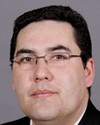No.
Evidence of meeting #34 for Indigenous and Northern Affairs in the 39th Parliament, 1st Session. (The original version is on Parliament’s site, as are the minutes.) The winning word was housing.
A recording is available from Parliament.
Evidence of meeting #34 for Indigenous and Northern Affairs in the 39th Parliament, 1st Session. (The original version is on Parliament’s site, as are the minutes.) The winning word was housing.
A recording is available from Parliament.
11:45 a.m.
Assistant Director, Aboriginal Data, Social and Aboriginal Statistics Division, Statistics Canada
No.
February 6th, 2007 / 11:45 a.m.
Conservative

Steven Blaney Conservative Lévis—Bellechasse, QC
Good morning.
Along the same lines, I am a bit surprised to learn that aboriginal home owners need to make more repairs than renters. This goes against the logic that when one becomes a home owner, the dwelling is better looked after. This also comes as a surprise to me, because when we develop housing policy, we lean towards making aboriginals responsible for housing. I would like to hear your comments on this subject.
How much time do I have left, Mr. Chair?
11:45 a.m.
Conservative

Steven Blaney Conservative Lévis—Bellechasse, QC
That was my first question.
My second question is the following. When you drew up these population charts, you said that you included the three groups. Did you also take into account communities undergoing demographic growth and those in regression?
I would like to hear your thoughts on that.
11:45 a.m.
Director General, Social and Demographic Statistics, Statistics Canada
With respect to repairs, we cannot give you the specifics in each one of the cases. We cannot give you the reason why home owners have to make more repairs. Aboriginals who own their houses have to make more repairs than others.
If I understood your second question correctly, you are inquiring on the growth of different aboriginal groups, specifically the Inuit, the Metis and Indians. According to our hypotheses, there have been differences in the past regarding the growth of these groups. For example, there are differences in fertility rates. The fertility rate of the Metis population, for example, is lower than other populations.
11:45 a.m.
Conservative

Steven Blaney Conservative Lévis—Bellechasse, QC
I have a more specific question to ask. Did you take into account the regional profile of the Indian population? For example, the Indian population in Quebec appears to be stable, or decreasing, whereas the numbers are increasing in the west. Do you have your model?
11:45 a.m.
Director General, Social and Demographic Statistics, Statistics Canada
Yes, indeed. Our projections do take into consideration the regional situation. They not only take into consideration the provincial situation, but also the situation within the provinces themselves. We take into account populations living on and off reserves.
11:45 a.m.
Director General, Social and Demographic Statistics, Statistics Canada
Yes, we have this information.
11:45 a.m.
Conservative

Steven Blaney Conservative Lévis—Bellechasse, QC
It would be interesting to have a regional breakdown of aboriginal community growth. That would be of interest to me.
That is what I suggest, Mr. Chair.
Thank you.
11:45 a.m.
Conservative

The Chair Conservative Colin Mayes
The chair would like to ask a question.
As concerns the comparative age demographics, when you talk about aboriginal and non-aboriginal with regard to crowding, you make the statement in your report that the aboriginal population is a younger population, whereas the non-aboriginal population is an older population.
There are many baby boomers who, like my wife and I, live in a three-bedroom home, just the two of us, whereas if we were a younger demographic population, as far as non-aboriginal is concerned, we might tend to have more children in a smaller home. Did you take that into consideration when you compared non-aboriginal and aboriginal overcrowding?
11:50 a.m.
Director General, Social and Demographic Statistics, Statistics Canada
The definition of overcrowding we are using is one that is applied and standardized across all populations, but you certainly have a good point. With a younger population, you do have larger families and you do have larger household sizes; thus, you would have a larger proportion of population per household.
11:50 a.m.
Conservative

The Chair Conservative Colin Mayes
I mention it because under your definition, my children would be in that situation of overcrowding.
11:50 a.m.
Director General, Social and Demographic Statistics, Statistics Canada
For sure. This is one indicator. This is one of many statistics we provide to various policy analysts. They take into account many factors, including the overcrowding factor, but include as well family size, household size, and age distributions of the region. All of these are taken together, as well as other statistics, in determining the situation with regard to a particular area or a particular group.
11:50 a.m.
Conservative

The Chair Conservative Colin Mayes
Thank you.
We have about 10 more minutes. Are there any further questions from the Liberal side?
Go ahead, Mr. Russell. You have five minutes.
11:50 a.m.
Liberal

Todd Russell Liberal Labrador, NL
Good morning, and thank you for the presentation.
I remember great debates over the ancestry question as opposed to the identity question, which changed in 2001 or something of that nature, I believe, in terms of the surveys that were being conducted and the census data that were being collected.
My question is not so much for you guys. I think there's only one indicator, from your presentation, of an area in which the aboriginal population might be better off than the non-aboriginal population in terms of housing. Other than that, almost every indicator would say we're worse off in the aboriginal communities, and it doesn't matter where we live—in the Arctic, in small rural areas, or in metropolitan areas. The word “crisis” comes to mind, although there may have been some marginal improvement in some areas.
Mr. Chair, has this been directed to the parliamentary secretary? I don't know if that's appropriate or not. We had a lot of housing money announced—hundreds of millions of dollars, apparently, in housing money. Can we get an update? Where is that? Has it been disbursed to the provinces? There were supposed to be trusts, but now I understand no trusts are being set up and what was announced has gone to the provinces and is being disbursed through the existing housing regimes already in place.
Can we get that answered for the committee?
11:50 a.m.
Conservative

The Chair Conservative Colin Mayes
You can ask that question. I think we're dealing with statistics right now. If you want to talk about statistics, I would suggest that question would be more appropriate at this time.
11:50 a.m.
Liberal

Todd Russell Liberal Labrador, NL
Can you guys answer that?
I'm sure the answer is probably no. I appreciate where you're coming from.
11:50 a.m.
Conservative

The Chair Conservative Colin Mayes
You'll have that opportunity on February 13, when we have the department here.
11:50 a.m.
Liberal

Todd Russell Liberal Labrador, NL
Thanks for that. I thank you for the information. It's quite useful.
11:50 a.m.
Conservative

The Chair Conservative Colin Mayes
First, on the government side, are there any questions?
Go ahead, Mr. Merasty.
11:50 a.m.
Liberal

Gary Merasty Liberal Desnethé—Missinippi—Churchill River, SK
Although some first nations communities have been excluded and there are challenges to the data, from what I hear the bottom line is that there is a housing shortage and there is significant demand for major repairs. Significant investment would be the natural assumption from reading these statistics. Is that true? Is that what you see as well?
11:50 a.m.
Director General, Social and Demographic Statistics, Statistics Canada
With regard to the reserves that have been excluded, the percentage of the overall population of the North American Indian identity population that has been excluded is relatively small. When we are looking at the tendencies and trends for the aboriginal population, while these exclusions are important for certain regions of the country and do have to be taken into account when looking at these data, overall the information that we have on the aboriginal identity population—
11:50 a.m.
Director General, Social and Demographic Statistics, Statistics Canada
Do you mean now, with regard to the housing? We are able to provide you with the conditions of housing—the extent of the overcrowding, the extent of the housing that needs major repairs, the extent of the housing reported to have water contamination, and how this varies and can be compared within aboriginal groups and with the non-aboriginal population. We can also tell you how this changes over time.